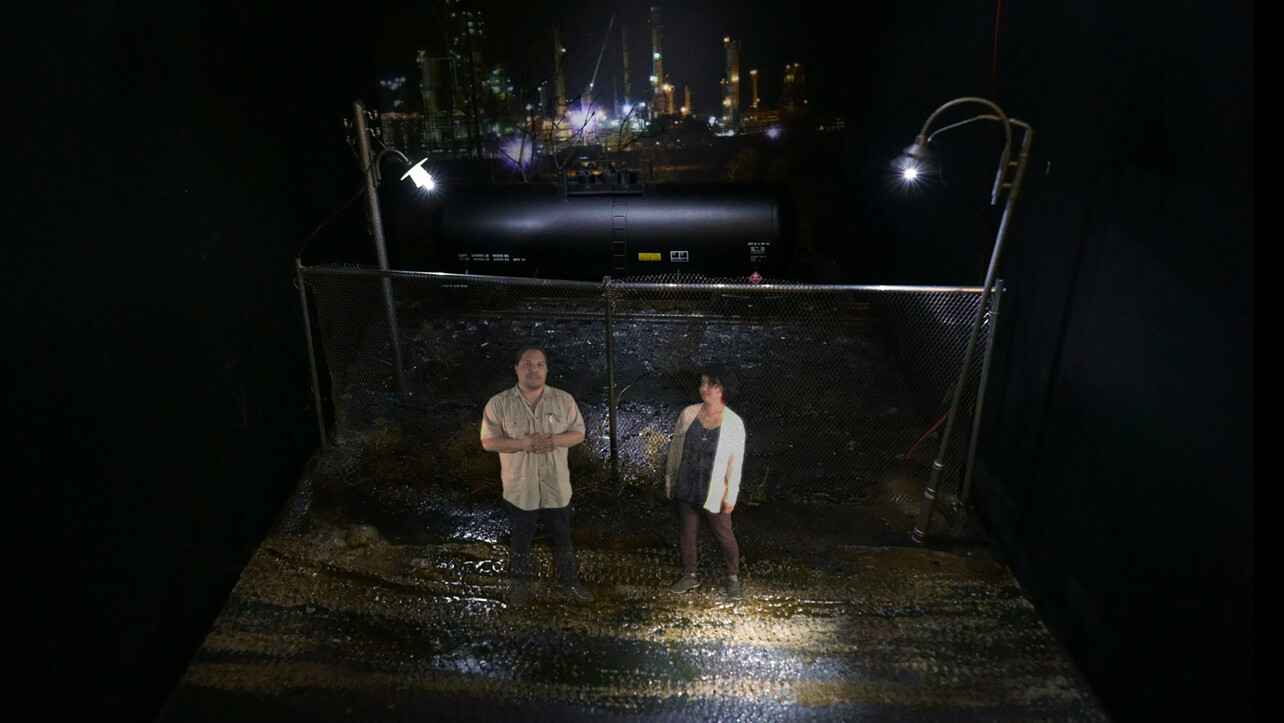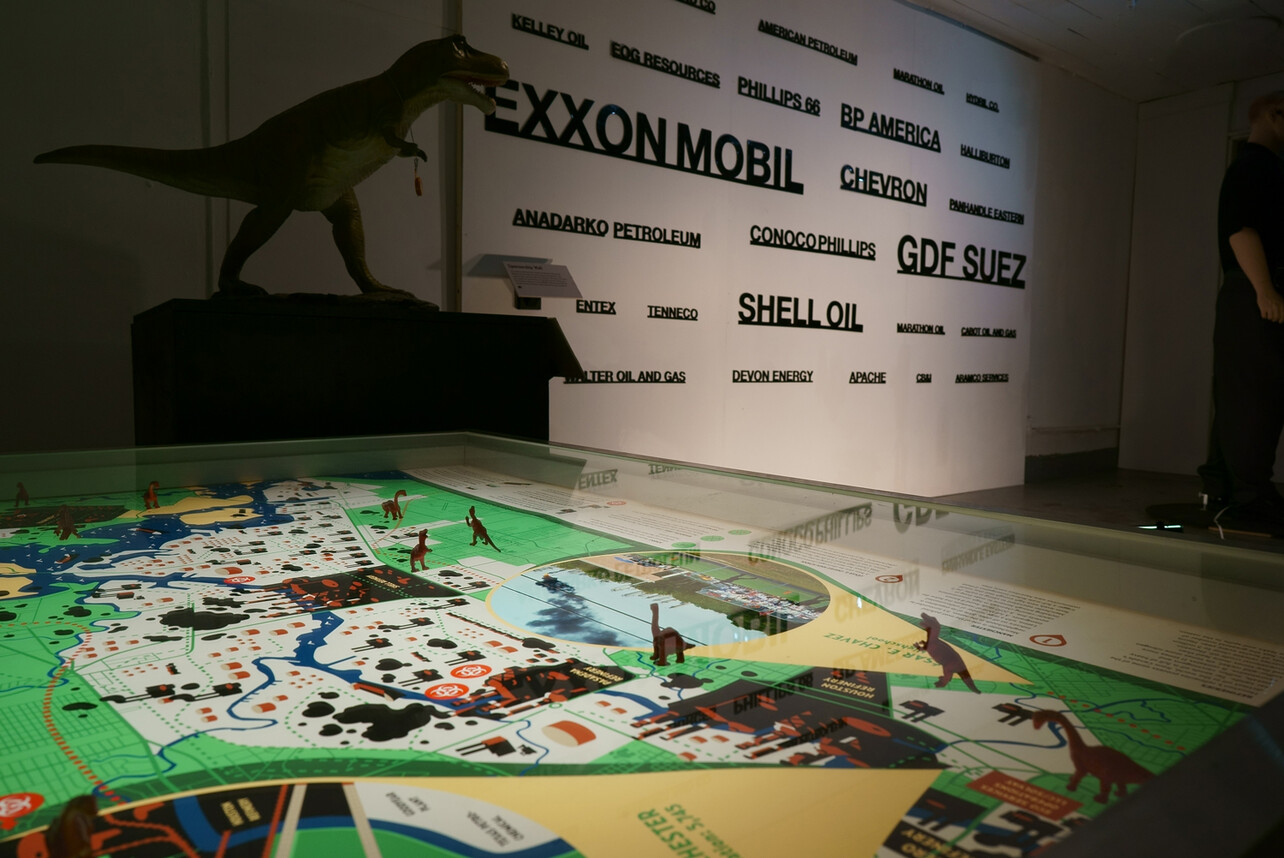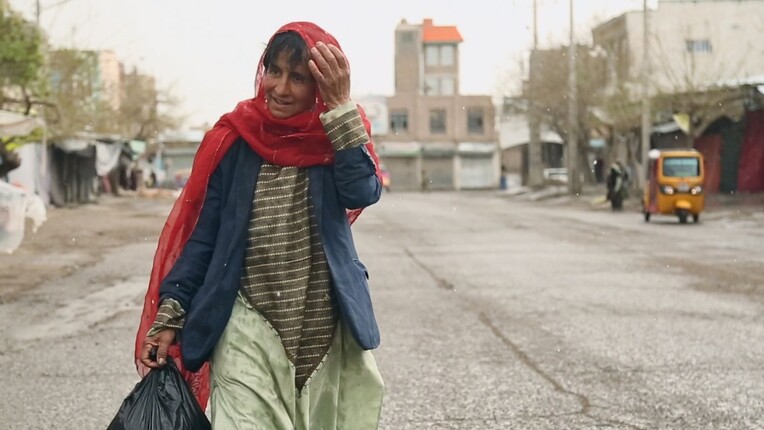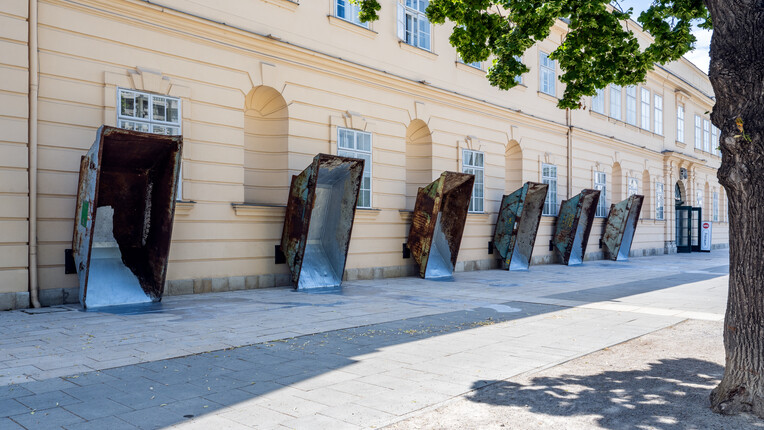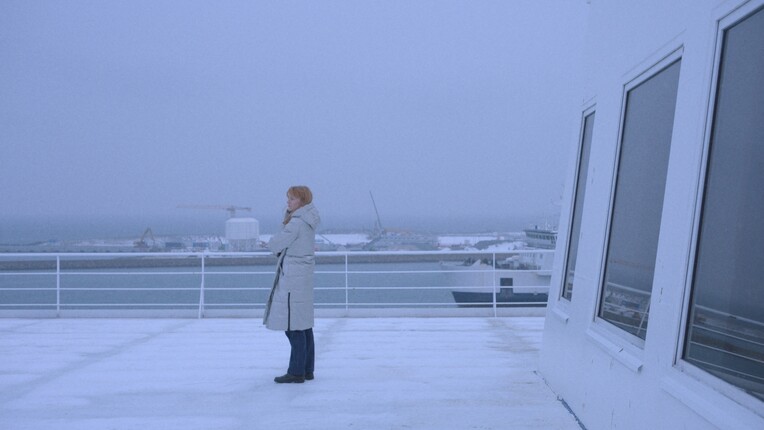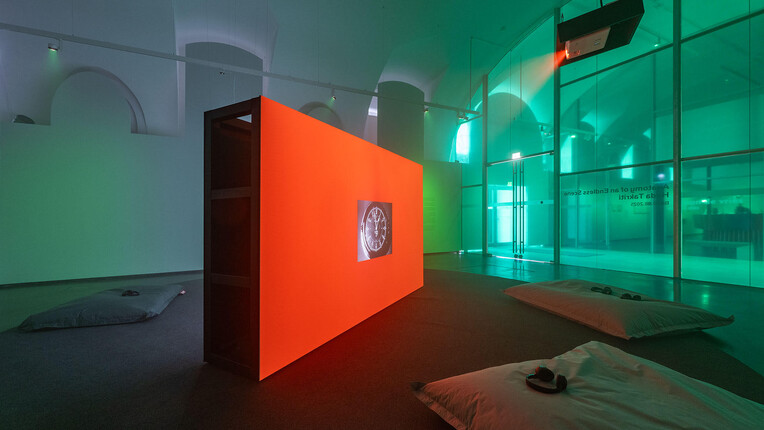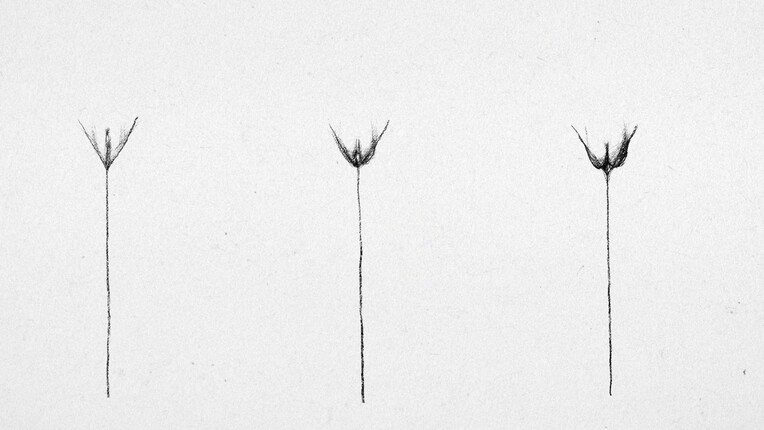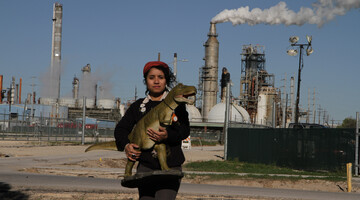
“Our work is geared toward the production of collectivity.”
As part of the group exhibition "Overground Resistance" curated by Oliver Ressler at frei_raum Q21 exhibition space, the artist collective Not An Alternative present their project The Natural History Museum.
This conversation between Steve Lyons and Oliver Ressler presented here in shortened and edited form, took place around the conference “Barricading the Ice Sheets” at Camera Austria in Graz in February 2020.
Oliver Ressler: Can you talk about the most important aspects of your artistic praxis? How did it develop?
Steve Lyons: I work with Not An Alternative, a collective of artists, theorists, and activists in the United States. Our current and ongoing project is The Natural History Museum (NHM). The NHM is both an officially accredited museum of natural history and an activist organization, which we founded in 2014 as an experiment on the U.S. sector for science and natural history museums. Our idea was to occupy the museum form in order to enter the museum sector as a kind of Trojan horse. Building on the work of our comrades at Liberate Tate, our first projects and campaigns used the museum as a platform to get climate change obfuscationists and fossil fuel oligarchs dropped from the boards of trustees of some of the largest science museums in the country. Since 2017, we have developed ongoing collaborations with Indigenous communities and organizations that are working on the frontlines of the climate crisis, with the aim of leveraging museums as communications platforms for their struggles and campaigns.
Oliver Ressler: How would you describe the role of artists within the climate justice movement? How do you see them and how do you wish it would be?
Steve Lyons: We think it’s important to make a distinction between artists and cultural producers. One of the challenges of thinking about how artists can engage within the culture of social movements is that the concept of art comes with a lot of baggage. The dominant tradition of contemporary art is entirely compatible with the ideology of bourgeois individualism. In this tradition, art is largely imagined to transcend the everyday, valuing novelty and creativity over political efficacy. And we see this within the structure of the art world, not only in the United States, but globally. A few members of Not An Alternative went to art school, but not the majority. We see ourselves as cultural producers, and see the broader framework of cultural production to be a more generative framework to think about the kind of work that we do, as well as the kind of creative political work that people do within the context of social movements.
As a collective, we have historically avoided attributing our individual names to any given project. We are organized as a collective – so we work together, as a group – but, more importantly, our work is geared toward the production of collectivity. It’s worth emphasizing that culture, in the anthropological sense of the term, has always been central to the formation of collectives. Cultural forms and practices produce social bonds, allowing people to distinguish their comrades from their enemies. They are also the means by which collectives express counterpower. As cultural producers, we work on the terrain of culture (again, in the anthropological sense) to build, expand, and sharpen the language in common that holds us together as a “we.”
Oliver Ressler: Jay Jordan in the abstract for his talk for the conference “Barricading the Ice Sheets” uses the term of “extractivist art”. Is an activist art “extractivist”, if it takes place in an art institutional context?
Steve Lyons: That’s a loaded question! Of course I can think of numerous examples of artists who have a parasitic relationship to social movements, who are more invested in trading on political righteousness than with the building of collective power. But does every practice that locates itself within cultural institutions need to be extractivist? I don’t think so. The history of creative activism within museums that we associate with the tradition of institutional critique – the Art Workers’ Coalition in New York comes to mind – runs against the grain of what JJ is calling “extractivist.” In this tradition, art institutions are taken as backdrops and sites from which people have come together to engage in anti-imperialist, anti-patriarchal, anti-racist struggle. Since the 1960s, there have been numerous instances, including some that JJ has been involved in, where artists have seized cultural infrastructures as resources and platforms for political struggle.
Does the activist intervention offer credibility to the institution, giving it a veneer of authenticity? Or does it add value to a social movement or campaign? Does it activate the institution as a site of political struggle or force a decision? Of course, some projects do all of these things, since working within and against is always, necessarily, contradictory. But I think, for example, that the groups associated with BP or Not BP and Liberate Tate in the UK, who are working on fossil fuel divestment and sponsorship campaigns in London, are doing a really great job of working within museums, but against the interest that these museums were built to serve. Not An Alternative is also working between social movements and museums. We are not satisfied with our work unless it is adding to the movement or campaign we’re contributing to. We are constantly asking ourselves if we are contributing to the building of collectivity, strengthening the operative divisions, or producing concrete change that puts our comrades in a better position.
Personally, I don’t think there are any uncomplicated sites of struggle. Whether we’re in a museum or a public square, we’re struggling within and against capitalism. And given the state of the world, I think it’s important that we’re not only working at the margins.
Oliver Ressler: The enormity of the challenge of the climate crisis requires that also the wider art world needs to transform radically. What are central aspects of this transformation from your point of view?
Steve Lyons: Some people would argue that the art world is simply an infrastructure for the production of capital. The art world, in this view, is a complex of art fairs, commercial galleries, and museums, which articulate to produce capital, both through the trade of assets and the production of prestige. Financiers get social benefits from the art world, and artists get symbolic and cultural capital, both of which are at some point, and continually, parlayed into money. One problem with this account is that it doesn’t help us understand what Greg Sholette calls the art world’s “dark matter”: the glut of surplus labor that this complex produces. I think it’s more generative to see the art world from the perspective of contradiction – to see it as an infrastructure that produces class divisions, and which thus creates the conditions for antagonism and struggle. From this vantage, the art world is an infrastructure in which money and power circulate, but also an infrastructure that can be seized.
Take art magazines, for example. Big art magazines like Artforum are currently distributed in ways that represent ruling class tastes while contributing to the value of ruling class collections. But this function is historical and contingent. Art magazines do not need to contribute to the reproduction of ruling class power, and there are plenty of examples of art magazines that don’t. One of the benefits of understanding the art world as something that is internally divided, as a sort of split subject that can be struggled over, is that you can see the means of production and distribution as potential resources for left struggle. This isn’t just hypothetical. It’s happening.
We could consider the recent controversy around Warren Kanders, owner of the weapons manufacturer Safariland and until recently, trustee of the Whitney Museum of American Art. During the last Whitney Biennial, community members and artists mobilized to get Kanders kicked off the board of the museum, seizing the museum and the Biennial as a platform to not only draw attention to Kanders and the brutality his wealth is built on, but also to underscore the complicity of the museum. At a pivotal moment in the campaign, Artforum published an article titled “The Teargas Biennial,” which effectively subordinated the story of the Biennial to the story of the Kanders campaign, making the campaign impossible for the institution to ignore. While there were other factors, including internal divisions within the museum itself, it was only after the bad press that Kanders quickly and quietly stepped down from the board. In this case, we can see that Artforum, the iconic ruling class art magazine, was taken as a platform for a movement’s cause. The Whitney Museum, too, became a site for opposition, collectivization, and renewed politicization among and beyond New York’s art community. This is just one example of how ruling class infrastructures can be hijacked.
Oliver Ressler: I have a question on the use of language: In the northern countries, where winters are cold, for some people the term “global warming” may sound like a reference to something pleasant and desirable. Are there any suggestions concerning the replacement of this term or about the power of language in relation to climate disruption in general?
Steve Lyons: Not An Alternativeis invested in using the language that is out there, the language that is being used and that has power. For us it is not a question of substituting one term for another because it is purer or clearer in its descriptive or explanatory capacity. It’s a question of using the term that works. What term is more useful in building collectivity? What are people mobilizing around? Are people rallying around the term “global warming”? Does the term clarify the terrain of struggle? Is it an effective term? If it is, then we use that term, we commit to it and build our work around it.
A good example of how this was active in our practice is when we were working within the Occupy milieu, specifically within Occupy Wall Street. In Oakland, California, there was a major division, pretty quickly after Occupy Oakland began, where a whole subset of the movement came out against the term “Occupy.” “Occupation is the language of the colonizer; we want to Decolonize Oakland!” The movement split in two. For us, while the choice to mobilize around “Occupy” or “Decolonize” opens onto a set of important theoretical questions, from the point of view of practice, the question should actually be much simpler: “What is the term around which counterpower is being built, and in what ways can we build on that?” The point is to expand the collective power that is already there. So that’s a non-answer to your question.
Oliver Ressler: Well, you described quite well why you don’t answer directly.
Where can we glimpse potential futures and new worlds grounded in social justice and ecological flourishing, and how can these be cultivated through creative aesthetic practices?
Steve Lyons: This brings me back to the point where we started, where I wanted to make a distinction between a framework that is organized around art and a framework that is organized around cultural production. The term cultural production includes the production of food, rituals, aesthetic practices, and forms of resistance. From the vantage of cultural production, it becomes easier to see what is actually happening within the movements. Where are we beginning to see the production, or at least the prefiguration, of a more livable world? For several years, Not An Alternative has been admiring the work of Indigenous water protectors and land defenders. And one of the things that has really struck us about the struggles against the Dakota Access Pipeline at Standing Rock or against the Coastal Gaslink Pipeline at Unist'ot'en Camp on Wetʼsuwetʼen territory in the northwestern part of Canada, for example, is that they are both strongly oppositional – building blockades, holding their ground, and claiming sovereignty of the place against the pipeline company – and also affirmative. Behind the barricades there are camps which operate like training grounds for non-capitalist modes of life, places where people are collectively developing new ways of living and rediscovering old ones, establishing relations to the land and each other that are incommensurate with the extractivist reasoning that has led to the climate crisis. We cannot survive without a thriving world and the world will not survive unless we respect it. And the political and ethical obligation to the land that arises from this way of seeing and relating is not only inspiring. When it’s instituted at the barricades and cultural camps, it also establishes, here and now, a relation to the land and political horizon that points toward a world beyond capitalism.
